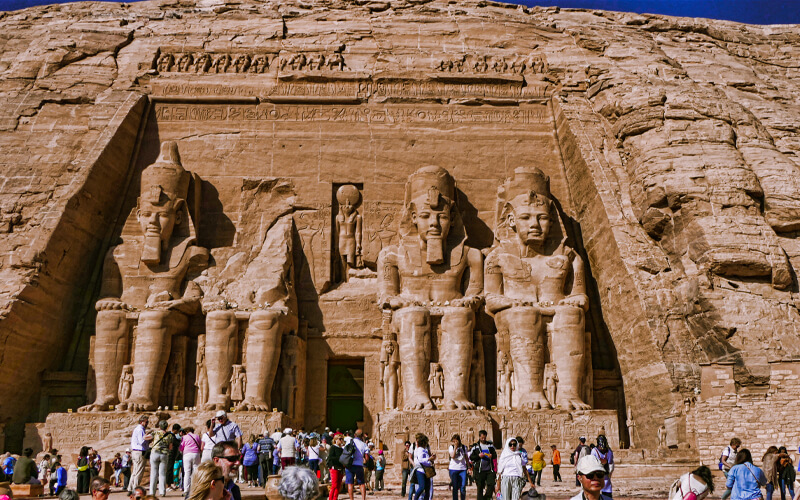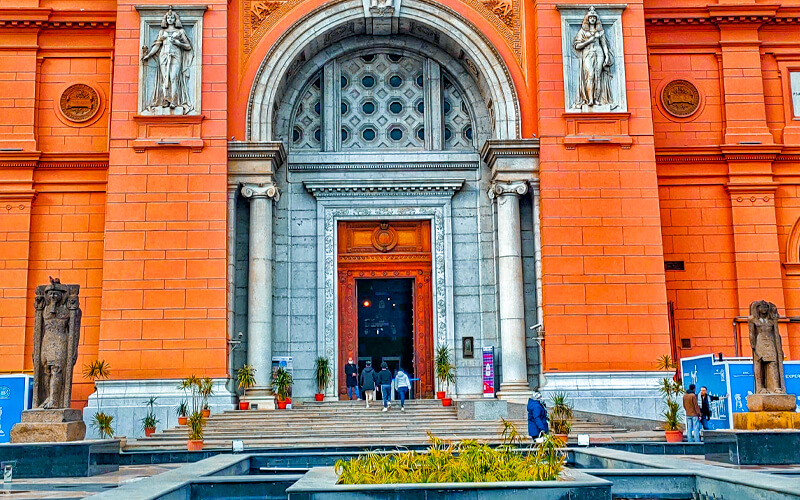Attractions in Aswan
Attractions in Aswan
In part because of its position below the northernmost waterfall on the Nile, Aswan served as Egypt’s traditional southern border with its competitor, Nubia, for centuries. Nubians and Egyptians have always contended for land and influence throughout history, as their respective powers rose and fell. However, Aswan has always served as the natural boundary between the two countries.
In addition to marking the governmental border, the city served as an economic crossroads, and it prospered as a trade center and a gateway between Egypt and the rest of Africa. Because the Nile is navigable to the Mediterranean Sea north of Aswan, overland trade routes, caravans of elephants and camels transporting valuable goods from the south, and other vessels traveling north Egypt and beyond, all converged here to load their goods onto ships traveling north Egypt and beyond.
Even in current times, Aswan’s geographical position at the base of the cataract has continued to influence its history. A staging area for Anglo-Egyptian soldiers traveling south to suppress rebellion in Sudan during Egypt’s colonial period, Aswan served as a base of operations for the army. As a result, by the end of the nineteenth century, Aswan had developed into a popular tourist destination, thanks to the pleasant winter weather that drew European tourists seeking to escape the cold of their own countries.
Today, it is still a must-see tourist site in Egypt, known for its stunning landscape along the Nile and the Nubian culture, which has a significant presence in southern Egypt and continues to influence the region. Construction of the contentious High Dam, which began in 1964, resulted in the displacement of almost 100,000 Nubians who lived along the river’s banks. Many of these people currently reside in and around Aswan, where they earn a livelihood from tourism, either via the manufacture and sale of traditional Nubian products or by participation in various cultural events.
Due to Cairo‘s frantic pace and the concentration of visitors in Luxor around its numerous Pharaonic sites, Aswan offers a considerably more relaxing experience compared to its counterparts. It is the smallest of Egypt’s main tourist destinations, but it is also the most distinctively Nubian, with its more laid-back attitude toward life. Those interested in Pharaonic history should not miss out on visiting Aswan, which is home to the majestic Philae Temple, which is situated on an island behind the old Aswan Dam, as well as the famed Abu Simbel Temples, which are located several hours south along the shores of Lake Nasser.
Abu Simbel was founded in 1813 by Swiss explorer John Lewis Burckhardt, who was on a mission to find the lost city of Memphis. The temples had been abandoned for a long time, and the sands of the desert sands had covered everything except the tops of the heads of the massive statues that stood in front of their gates. After years of sand accumulation, the twin temples of Karnak have risen to become the most visited attraction in Egypt’s southernmost region.
Even though they seem to be memorials to Ramesses II and his wife, both temples are in fact temples dedicated to the gods of Egypt. The bigger temple, which has four massive sculptures of Ramesses II sitting in front of it, is devoted to Amun, Ptah, and Re-Harakhti, while the smaller temple is dedicated to Amun and Ptah. Ramesses’ favorite wife, Nefertari, had her temple erected in her honor, which was dedicated to the goddess Hathor. The second temple, which is still enormous while being substantially smaller than the first, was dedicated to the goddess Hathor.
The temple’s exterior is adorned with six gigantic sculptures, four of which portray Ramesses and two of which depict Nefertari. The second temple is important for the elevated position accorded to the pharaoh’s wife, who is shown on multiple occasions as being on an equal footing with the king in the temple.
Abu Simbel’s temples are situated several hours south of Aswan, however, the majority of visitors arrive at the site by aircraft rather than by car. The trip from Aswan is just 30 minutes long, and there are two flights each day, both of which are scheduled so that travelers will have around two hours to spend at the Temples of Abu Simbel.
It should be noted that Aswan was the source of most of the granite used in ancient building projects, and parts of the quarries are available to visitors today, with the Unfinished Obelisk being a particular attraction. This massive obelisk would have stood 140 feet tall, making it the tallest structure ever built in Egypt. He intended for it to be carved from the famed Red Aswan granite, which is used to embellish many of Egypt’s most important monuments and for which the city is known. However, the construction of this, the most impressive of all of Egypt’s monoliths, was never completed. A weakness in the granite was identified at a late point in the creation of the structure, and it was abandoned. Despite all of this, the beauty of the Nile River and the people of Aswan remain the city’s true focal points of attraction. One of the most memorable experiences of any vacation is sailing on the Nile’s whirling, transparent blue waters to visit one of the island settlements near Cairo.
A journey on one of our lake Nasser excursions to one of the nearby islands or a short cruise on the Nile is a must-do on any trip to Aswan and can be included in any tour package. When compared to the famous river cruises between Aswan and Luxor, Lake Nasser‘s boats provide a more relaxing experience. We have many options for you such as the SAI Dahabiya Lake Cruise, Movenpick Prince Abbas Lake Cruise, MS Nubian Sea Lake Nasser Cruise, and Steigenberger Omar El Khayam Lake Cruise, to name a few. In addition, many tourists choose to take a Nile Cruise between Aswan and Luxor.
If you want to spend a fantastic vacation check out our amazing Egypt Vacation packages or Aswan Excursions to find the best way to travel to Egypt for you with Egypt Travel Guide with us in Egypt Nile Cruise



